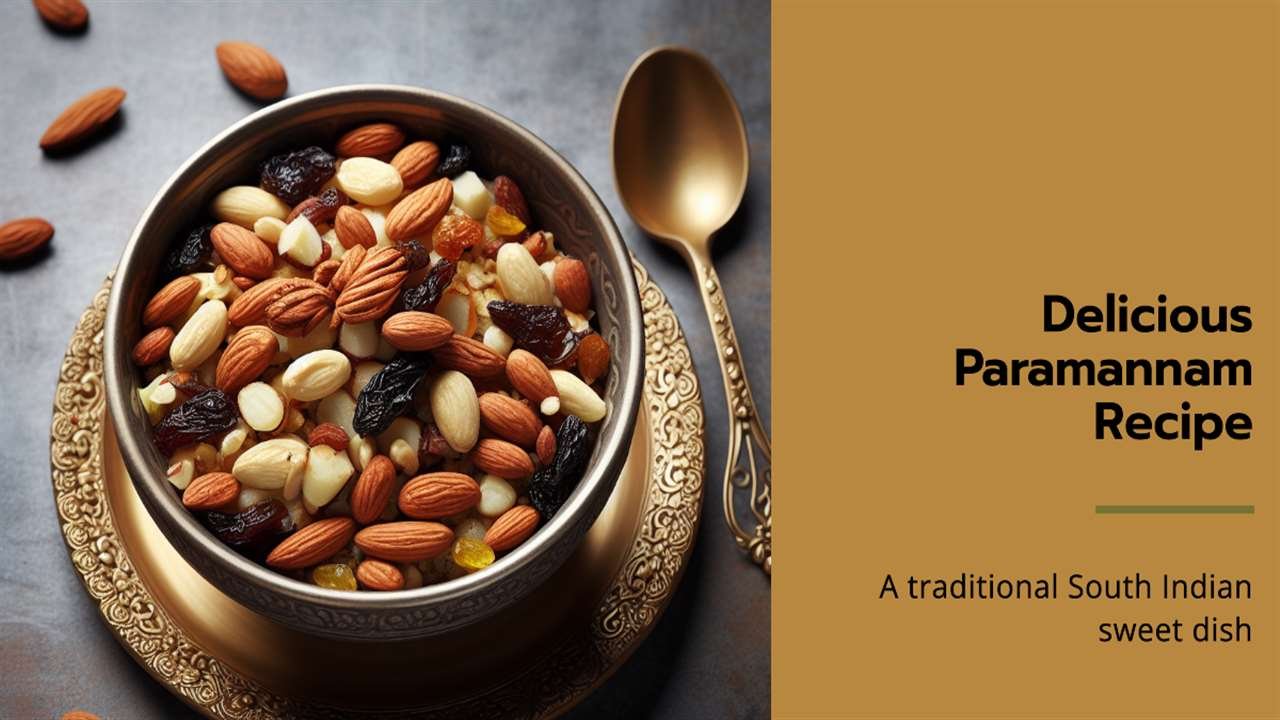Have you ever craved a dessert that not only satisfies your sweet tooth but also transports you to a world of cultural richness and tradition? Look no further than the Paramannam recipe – a delightful South Indian sweet pudding that offers a burst of flavors and a perplexity of textures. In this article, we’ll delve into the heart of this traditional dish, exploring the art of creating the perfect Paramannam.
Exploring the Essence of Paramannam
A Cultural Tapestry
Paramannam is more than just a dessert; it’s a cultural tapestry woven with threads of tradition and love. The perplexity of this dish lies in the meticulous combination of ingredients, each chosen to honor the heritage from which Paramannam hails. It’s a sweet journey into the heart of South Indian cuisine, where simplicity meets sophistication.
Burstiness of Flavor
While Paramannam is rooted in tradition, its burstiness comes from the layers of flavor that unfold with every spoonful. Imagine the richness of ghee, the warmth of cardamom, the crunchiness of nuts, and the sweetness of jaggery blending in perfect harmony. It’s a burst of joy for the taste buds, a celebration of South Indian culinary finesse.
Crafting the Perfect Paramannam
The Perplexity of Rice Selection
At the core of Paramannam lies the perplexity of rice selection. The choice of rice grains determines the texture of the pudding. Traditionally, a short-grain rice like sona masuri is used, offering a perfect balance of creaminess and individual grain integrity. The perplexity here is in washing and soaking the rice to achieve the desired texture.
Bursting with Aromatic Elegance: Cardamom and Ghee
The true burstiness of Paramannam emerges from the aromatic elegance of cardamom and ghee. The perplexity is in the artful balance – a dash of cardamom for its fragrant warmth and a generous dollop of ghee for richness. The burstiness is the heavenly aroma that fills the kitchen as these ingredients come together.
The Dance of Jaggery: Sweetness Unveiled
Jaggery, a traditional sweetener, is the star that adds sweetness and depth to Paramannam. The perplexity involves choosing the right type of jaggery and dissolving it to perfection. The burstiness is the earthy sweetness that marries seamlessly with the rice and elevates the overall flavor profile.
The Crunch of Nuts: A Textural Burst
To achieve the perfect Paramannam, the inclusion of nuts offers a textural burstiness. The perplexity is in choosing a combination of nuts – cashews for crunch, almonds for richness, and a handful of golden raisins for a burst of sweetness. The burstiness is the delightful surprise in every spoonful.
Tips and Tricks for Perfecting Your Paramannam
Rice-to-Water Ratio
Mastering the rice-to-water ratio is crucial for achieving the right texture in Paramannam. The perplexity is in finding the balance – enough water to cook the rice until soft but not so much that it becomes mushy. The burstiness is in each distinct grain soaked in the creamy goodness.
Gradual Jaggery Incorporation
To avoid lumps and ensure even sweetness, the perplexity lies in the gradual incorporation of jaggery into the rice. Dissolving it in water and adding it slowly prevents clumps and allows the burstiness of sweetness to spread uniformly.
Controlled Heat for Roasting Nuts
Achieving the perfect crunch in nuts requires controlled heat. The perplexity is in roasting them over medium heat until golden brown. The burstiness is the nutty aroma that fills the kitchen, signaling the readiness of these delightful additions to your Paramannam.
In Conclusion: Paramannam Recipe – A Sweet Symphony of Tradition
As we conclude our exploration into the Paramannam recipe, it’s evident that this dish is more than a dessert; it’s a sweet symphony that resonates with South Indian tradition. The perplexity of rice selection, the burstiness of cardamom and ghee, and the dance of jaggery and nuts create a harmonious blend that is both comforting and celebratory.
For more ideas, recipes, and cooking tips and tricks, please visit us at Funtopia.
FAQs: Navigating the Paramannam Culinary Adventure
Q1: Can I use any type of rice for Paramannam?
While tradition favors short-grain rice like sona masuri, you can experiment with other varieties. The perplexity is in adjusting the cooking time and water ratio based on the rice type, allowing you to tailor the dish to your preferences.
Q2: Can I substitute sugar for jaggery in Paramannam?
Certainly! The burstiness of sweetness in Paramannam can be adjusted by substituting sugar for jaggery. The perplexity lies in finding the right amount to achieve the desired level of sweetness.
Q3: How do I prevent the rice from sticking to the bottom of the pan?
To prevent the rice from sticking, stir it occasionally while cooking and use a non-stick pan if possible. The perplexity is in maintaining a gentle heat and adding enough water to create a creamy texture without sticking.
Q4: Are there variations of Paramannam in different South Indian regions?
Absolutely! South India boasts a diverse culinary landscape, and Paramannam may have regional variations. Some regions may add coconut milk for richness, while others may incorporate saffron for color. The burstiness lies in exploring these regional nuances.
Q5: Can Paramannam be served chilled?
Yes, Paramannam can be enjoyed both warm and chilled. The perplexity is in personal preference – some enjoy the comforting warmth, while others savor the chilled version, especially during warmer seasons. The burstiness is in experiencing the dish in a way that suits your mood.

